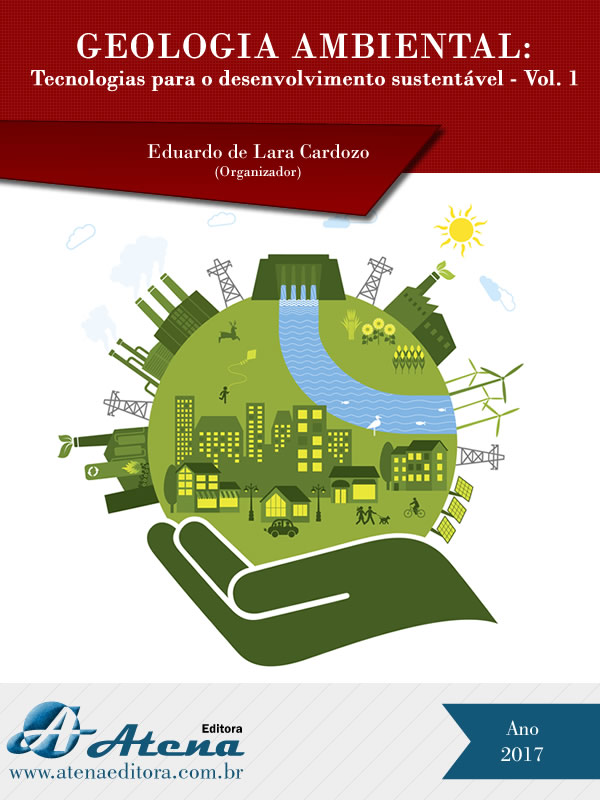
POTENCIALIDADE DOS RECURSOS HÍDRICOS NA BACIA DO CÓRREGO GUARIROBA, MUNICÍPIO DE CAMPO GRANDE-MS
A bacia hidrográfica do córrego Guariroba, localizada no extremo
nordeste do município de Campo Grande-MS possui área de 370 km². Em 1982 foi
construída uma barragem no seu exutório, formando um reservatório com 100 ha,
de onde é retirada uma vazão de 1,4 m³/s, responsável por cerca de 50% do
sistema de abastecimento da Capital, com população superior a 800.000
habitantes. Mais de 90% da sua superfície é recoberta por sedimentos cretáceos
do Grupo Bauru, com estreita faixa de afloramento dos basaltos da Formação Serra
Geral, notadamente ao longo da drenagem principal da bacia. Houve, nos últimos
anos, uma importante mudança no uso e ocupação do solo da bacia, com a
crescente substituição da predominante atividade pecuária, pela silvicultura de
eucaliptos. As vazões medidas no reservatório variaram entre 4,8 e 7,5 m³/s, mas
com números de descarga sólida total da ordem de 22 ton/dia a montante do
reservatório. Apresentam-se os dados preliminares referentes à hidrogeologia desta
bacia, decorrentes de estudo que tem por objetivo a avaliação da interação,
quantitativa e qualitativa, das águas subterrâneas com suas águas superficiais. O
mapa potenciométrico da bacia, elaborado com dados de mais de uma dezena de
poços tubulares perfurados no Bauru, aponta para a contribuição deste aquífero
livre na manutenção da vazão de base das drenagens. Embora já venham sendo
implementadas ações no sentido de reduzir o aporte de sedimentos para as
drenagens e o reservatório, contando inclusive com o apoio da Agência Nacional de
Águas, o conhecimento da dinâmica de interação das águas subterrâneas e
superficiais da bacia contribui para o gerenciamento eficaz e sustentável de seus
recursos hídricos.
POTENCIALIDADE DOS RECURSOS HÍDRICOS NA BACIA DO CÓRREGO GUARIROBA, MUNICÍPIO DE CAMPO GRANDE-MS
-
DOI: Atena
-
Palavras-chave: Aquífero Bauru; balanço hídrico; sistema de abastecimento de água.
-
Keywords: Bauru Aquifer; hydric balance; water supply system.
-
Abstract:
Guariroba watershed is located in the extreme northeast of the Campo
Grande city and has an area of 370 km². In 1982 a dam was built in its outflow
forming a reservoir 100 ha, from which a flow rate of 1.4 m³ / s is taken,
accounting for about 50% of the capital supply system, approximately for 800,000
inhabitants. Cretaceous sediments from Bauru Group covers about more than 90%
of the watershed surface, with a narrow outcrop range of basalts from the Serra
Geral Formation, especially along the main drainage basin. Recently, there has
been an important change in the use and occupation of the soil of the basin, with
the increasing substitution of predominant livestock activity by eucalyptus forestry.
Flow rates in the reservoir ranged between 4.8 and 7.5 m³/s. Preliminary
hydrogeology data are presented, resulting from a study that aims to evaluate the
quantitative and qualitative interaction of groundwater with its surface waters. The
potentiometric map of the basin, elaborated from data of more than a dozen
tubular wells drilled in Bauru Aquifer, points to the aquifer discharge in the
maintenance of the drainage base flow. Although actions have being implemented
to reduce the contribution of sediments to the drainage and reservoir, supported by
the National Water Agency, the knowledge of the interaction dynamics of
groundwater and surface waters of the basin contributes to the effective
management and sustainable use of its water resources.
-
Número de páginas: 15
- Giancarlo Lastoria


